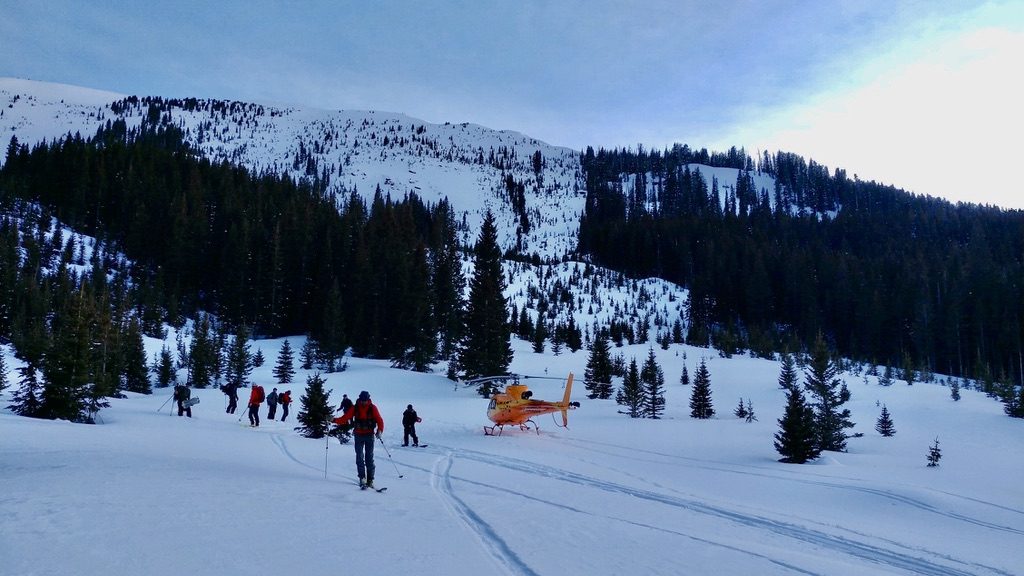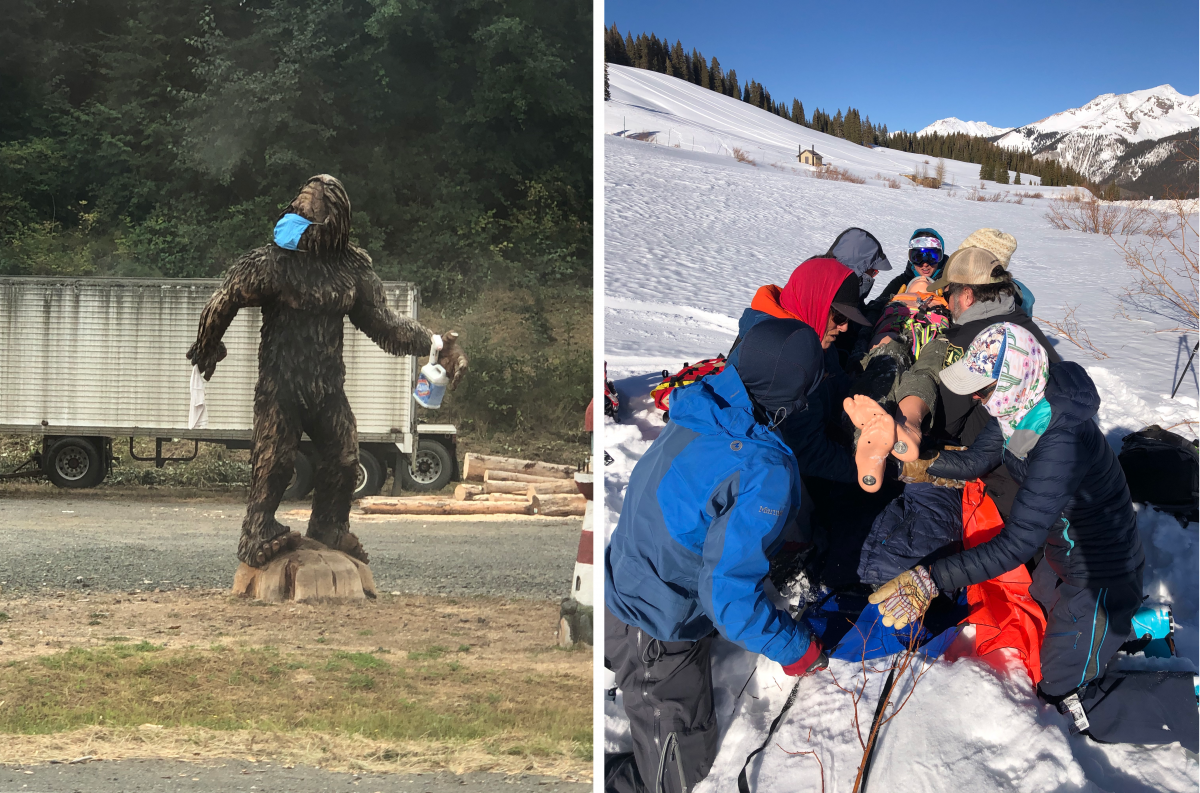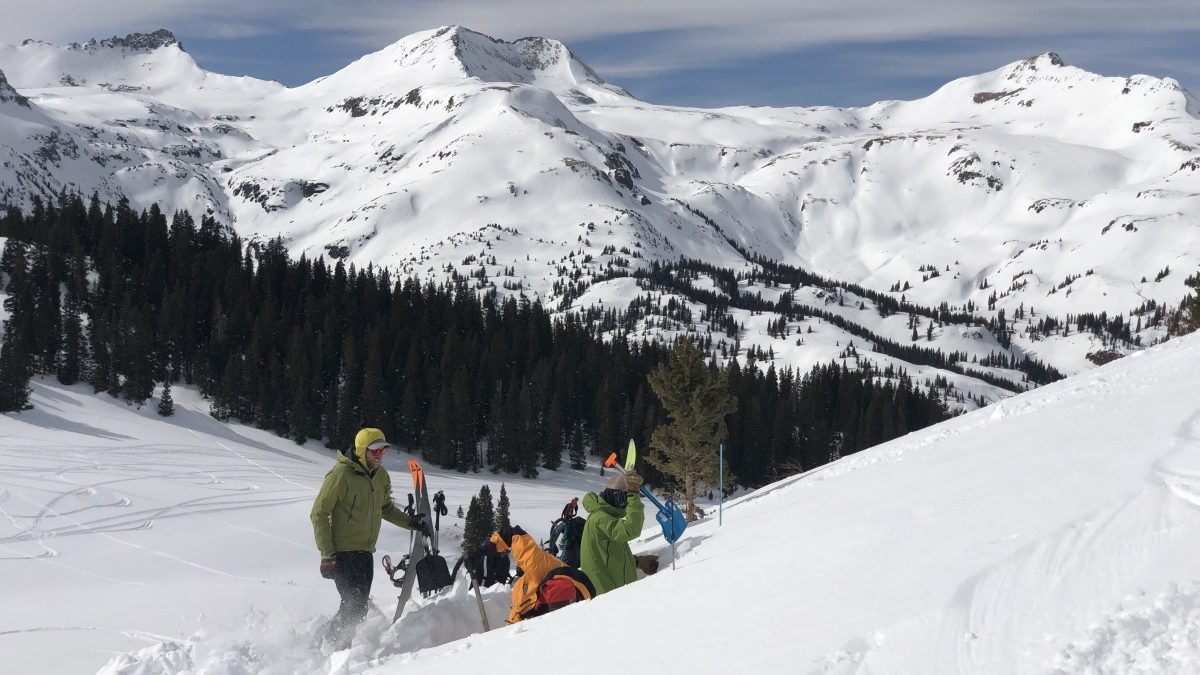As a professional avalanche educator, one of my guiding mantras for students on their backcountry touring career has been: Focus on proactive approaches to managing risk and personal safety, rather than relying on reactive skills. Similarly, emphasizing the reality of a quote by Archilochus, “We don’t rise to the level of our expectations, we fall to our level of training”.
One of the key components of safe travel in backcountry avalanche terrain is to develop a systematic approach to dealing with an environment littered with uncertainty. There are numerous reasons why humans have inherent difficulties in operating safely and incident-free in situations where a strong emotional response is coupled with a difficult-to-manage and potentially fatal hazard. Emotional input is immediate, hazard management is fatiguing, and we innately take short-cuts in our decision making and information processing.
Regardless if you are a long-time backcountry skier, or someone who is just hopping on the band-wagon here, we all have experiences in our lives that share similarities in how we manage uncertainty in varying situations. In order to maximize our learning potential, we have to look at our decision-making processes outside of backcountry skiing, and link these seemingly unrelated experiences in anticipation of a ski season ahead. How do you hedge the bets in your favor?
Managing uncertainty – linking “unrelated” experiences
Since early 2020, the human population has been dealing with a global pandemic. This has been the ultimate metaphor for how we as humans show up and handle environments riddled with uncertainty.
Reflect for a minute on the last eight months. Maybe it had nothing to do with snow and avalanches, but I imagine we all have a shared experience:
· You exist in a familiar environment, many of your friends and family are present, and your life consists of typical activities that bring you joy without much concern.
· Within a relatively short period of time, you are informed of a very real objective hazard present all around you. In this case it is the Novel Coronavirus that has the potential for fatal consequences to you and the people around you.
· This hazard is new to you. You know it exists and you know its potential, but you cannot see it and you don’t know exactly when and how it can affect you on a personal level.
· Initially, you resort to avoidance in order to stay safe. You quarantine and isolate yourself from the environment where the virus exists. This seemingly works for a while, but comes with compromise to your normal life.
· It doesn’t take long for avoidance fatigue to set in.You start to relax and become more liberal with your decisions. This is partially encouraged by the actions of people around you, and the emotional response of returning to a sense of normalcy.
· With time you become more accustomed to this unseen hazard and learn more about how the virus spreads, how you can better protect yourself and others.
· It’s difficult to live in avoidance, but you learn ways to mitigate exposure and enjoy a level of activity that brings you that same excitement and sense of adventure that you crave so innately. Are you taking all of the necessary precautions that you can?
I imagine that a few of these points resonate with the experiences of some or all readers over the last eight months. The process we have utilized to manage risk throughout the covid-19 pandemic on an individual basis may offer insight as to how we handle uncertainty and hazard in other contexts.
Now picture yourself stepping out from the relative safety of the ski area boundary into the backcountry environment for the first time. You’re still on your planks on a familiar snow covered slope with your best friends. The hazard changes to avalanches, but similarly, you can’t see it, and your ability to mitigate the fatal consequences depends on how you set yourself up for success. Time, experience, education, conservative choices are all part of the equation.

An image of an avalanche incident requiring search and rescue response in the San Juans last spring. Incidents in the backcountry carry vastly different consequences. How will you avoid serious outcomes?
While realizing that we are currently living in a real version of a SciFi novel, and the fact that this is a backcountry skiing blog, I ask you to look critically at the metaphor of the pandemic and our decision-making and risk management journey along the way. Have you been remaining in avoidance? Have you “center-punched” the metaphorical convex roll? Have you cautiously toured around and gathered enough information?
Whether you’re a veteran BC enthusiast, or someone who is thinking of taking an intentional break from the relative safety of the ski area this season, it’s important to reflect on how the last eight months have affected your thought process. None of us are immune to the inherent uncertainty of hazards in avalanche terrain. Fortunately; experience, mentorship and knowledge help us extend our ability to operate in these environments for more days and seasons ahead.
The new looks of avalanche education
So, what will this pursuit of experience, education, and mentorship look like in the winter covid-era?
Adaptability, new protocols, restructuring, etc are all part of the deal. It seems that none of our routines have been anything close to normal, but maybe this will have positive long-term effects!
Large indoor classroom sessions with groups of strangers sharing stories, discussing hazards, looking at maps, and staring at powerpoint slides are all examples of things that are not conducive to reducing one’s exposure to the hazard of coronavirus. So, we learn and we respond. If the last eight months ring true, you can expect a patchwork of strategies employed by various avalanche course providers on how they will carry out programs. Fortunately, we’ve had that amount of time to prepare for the upcoming winter and the anticipated high demand and even greater need for avalanche education programs.
A few things are certain: Masks, social pods, and physical distancing will all be imperative during winter programs throughout the usual flu season. Also, there will be substantially less (none?) indoor classroom-based time on courses this winter. Experience = change in approach! This may be the single best positive outcome for avalanche courses; less classroom time and more field time.
Of course, with this change comes some drawbacks, students will make up that lack of classroom time through some sort of online self-paced learning module. Dare I say Zoom? Maybe, maybe not. Some provider’s field sessions may stick to the standard 3-day model for Level 1 courses, some are moving to 2-day sessions with a more intensive online component.

Both Covid and rescue situations require adaptation and planning. Whats your approach to both this season?
A few tips on what to make of things
· If you’re an experienced backcountry traveler, seek out continuing education opportunities – whether that is a 1-day rescue course, medical training, or the next level avalanche course.
· Seek out an avalanche training provider that has outlined their Covid response plan and how they are managing the uncertainty of the hazard for students.
· Get a household, or a small pod group of friends together and reach out and inquire about a “private” or low ratio course. This will provide a great educational experience and inherently reduce exposure to covid.
· Stay healthy prior to and during your course! Don’t show up if you have any signs and symptoms.
· Be prepared for longer outdoor field and class sessions – ie: extra warm layers, field notebooks, hot drinks, food, etc. This will keep you engaged in the learning process.
· Take the online component seriously and plan your time to get it done well in advance of a practical session. This will not only benefit you and your time, but also others in the course.
· Seek out education! Especially if you’re new to the backcountry. Education is more important than the newest, lightest, most flashy gear. Budget for it!
Review
· There will inevitably be a patchwork approach to avalanche course programming (ie: Silverton Avalanche School has an online module part 1 that must be completed prior to participating in a 2-day field session part 2. Some programs will stick to a standard 3-day approach with an added online component prior to coming to class)
· Covid protocols are essential, plan to stay healthy prior to course, and respect face coverings, physical distancing etc.
· Uncertainty in avalanche terrain requires education, experience, and mentorship to safely manage – seek it out!
Be proactive to your safety this winter and don’t rely on rising up to your greatest expectations. We are all susceptible to falling back to our levels of training, hedge the bets in your favor.

Jonathan Cooper (“Coop”) grew up in the Pacific Northwest and has been playing in the mountains since he was a teen. This was about the same time he made the fateful decision to strap a snowboard to his feet, which has led to a lifelong pursuit of powdery turns. Professionally speaking, he has been working as a ski guide, avalanche educator, and in emergency medicine for over a decade. During the winter months he can be found chasing snow, and passing on his passion for education and the backcountry through teaching avalanche courses for numerous providers in southwest Colorado, and the Pacific Northwest. Similarly, his passion for wilderness medicine has led him to teach for Desert Mountain Medicine all over the West. If you’re interested, you can find a course through Mountain Trip and Mountain West Rescue. In the end, all of this experience has merely been training for his contributions to the almighty WildSnow.com.

